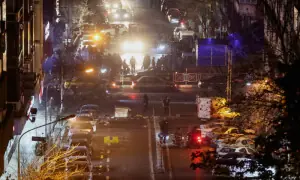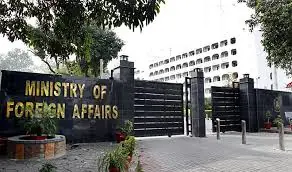Israel severely damaged Iran’s air defence system, US media claims
On Saturday, multiple sources and satellite imagery confirmed that Iran’s S-300 air defense system in Isfahan, which protects the Natanz nuclear site, was destroyed by long-range missiles that were fired from outside Iranian airspace.
While foreign reports, including The New York Times and Fox News, pointed to Israel as the likely perpetrator of the attack, Israel has remained silent on the matter. The involvement of drones in the attack remains unclear.
US Senator Marco Rubio suggested that Israel has the capability to carry out strikes on Iranian targets without entering Iranian airspace by using aircraft over Syrian and Iraqi airspace. Reports also indicated that the first stage of an Israeli-made missile, possibly used in the attack, was found in Iraq, suggesting that the missiles were not launched from Iranian, Israeli, or Jordanian airspace.
The attack potentially serves two purposes: sending a message to Iran that its nuclear facilities are vulnerable to future attacks and allowing the Islamic Republic to end the crisis by denying any significant damage. Unlike other Iranian nuclear facilities open to inspections by the International Atomic Energy Agency, the loss of the S-300 missile defense system can be hidden from public view, except through satellite imagery.
While the destruction of the S-300 system is significant because it is Iran’s most advanced anti-aircraft system, the attack is less damaging to Iran’s capabilities compared to Israel’s strike in February 2022, which destroyed a large number of Iranian drones. Furthermore, the attack did not directly target Iran’s nuclear program, meaning that the program itself has not been set back.
The Jerusalem Post was the first to confirm the use of long-range missiles in the attack, while The New York Times confirmed Israeli involvement. Iran, however, has claimed that there was no damage and that it shot down a few minor attacking drones. Footage of the damage caused by the strike was later published by Iran International.
Explosions were reported in Isfahan, southern Syria, and the Baghdad area and Babil Governorate in Iraq early on Friday. A US official confirmed that the Iranian target was not nuclear. Videos from Isfahan showed Iranian air defenses being activated in response to the attack. A senior US official stated that the US was not surprised by the attack and that Israel had informed them in advance.
The Iranian semi-official Fars News Agency reported an explosion in Qahjavarestan, east of Isfahan, near the Isfahan International Airport. The cause of the explosion remained unknown. Iranian air defenses were also activated in Tabriz, northwestern Iran, in response to a suspicious object spotted in the air.
According to Bloomberg News, Israeli officials notified the US in advance that they planned to launch a strike within the next 24-48 hours. Reports also indicated airstrikes targeting sites belonging to the Syrian Army in southern Syria.
The attack came in response to an alleged Israeli airstrike on a building near the Iranian embassy in Damascus, which resulted in the death of Mohammad Reza Zahedi, a senior IRGC commander overseeing Iran’s operations in Syria and Lebanon.
In January 2023, intelligence sources reported a successful drone attack on Iran in the Isfahan area, similar to the attack on Friday morning, despite Iranian claims to the contrary.
For the latest news, follow us on Twitter @Aaj_Urdu. We are also on Facebook, Instagram and YouTube.




















Comments are closed on this story.